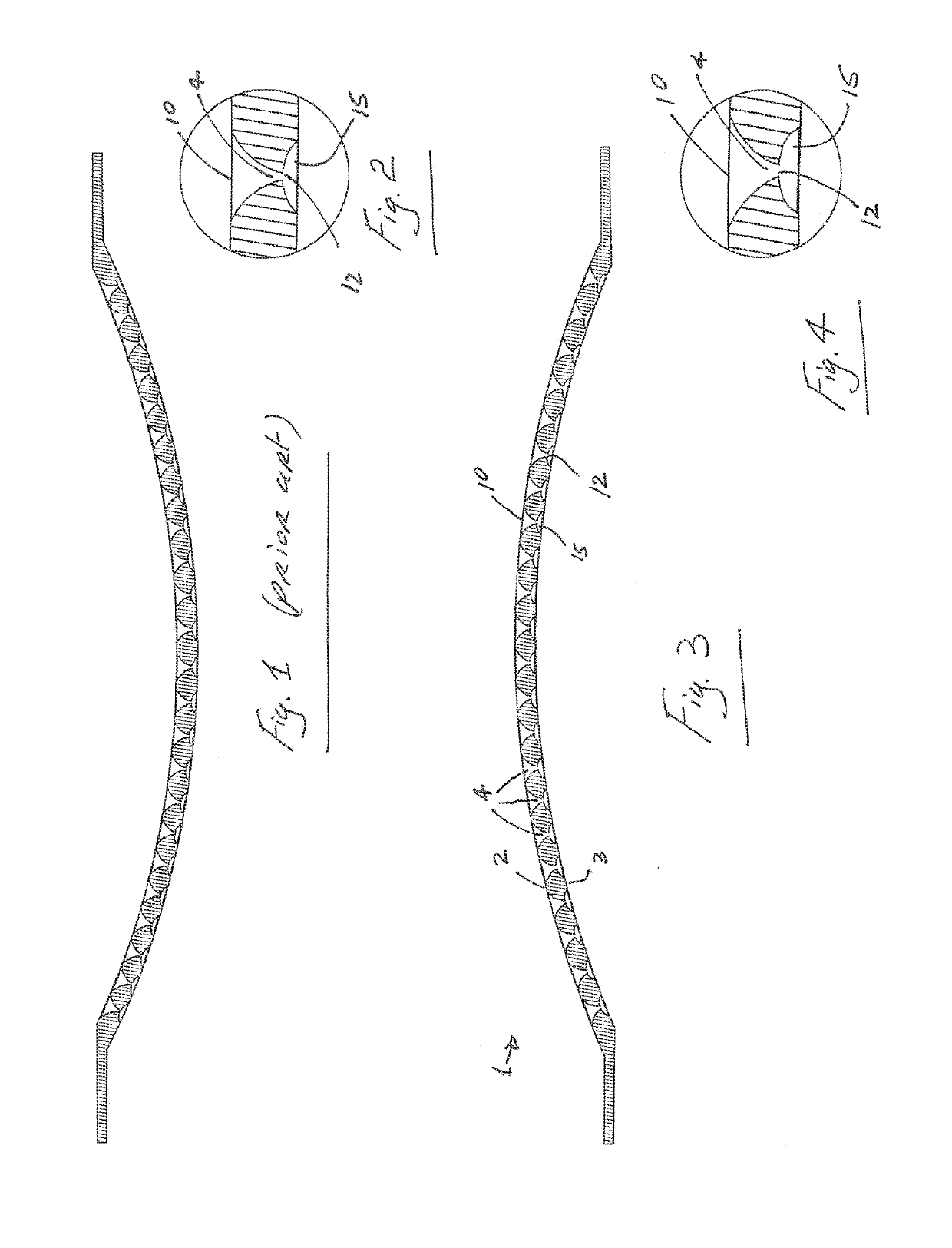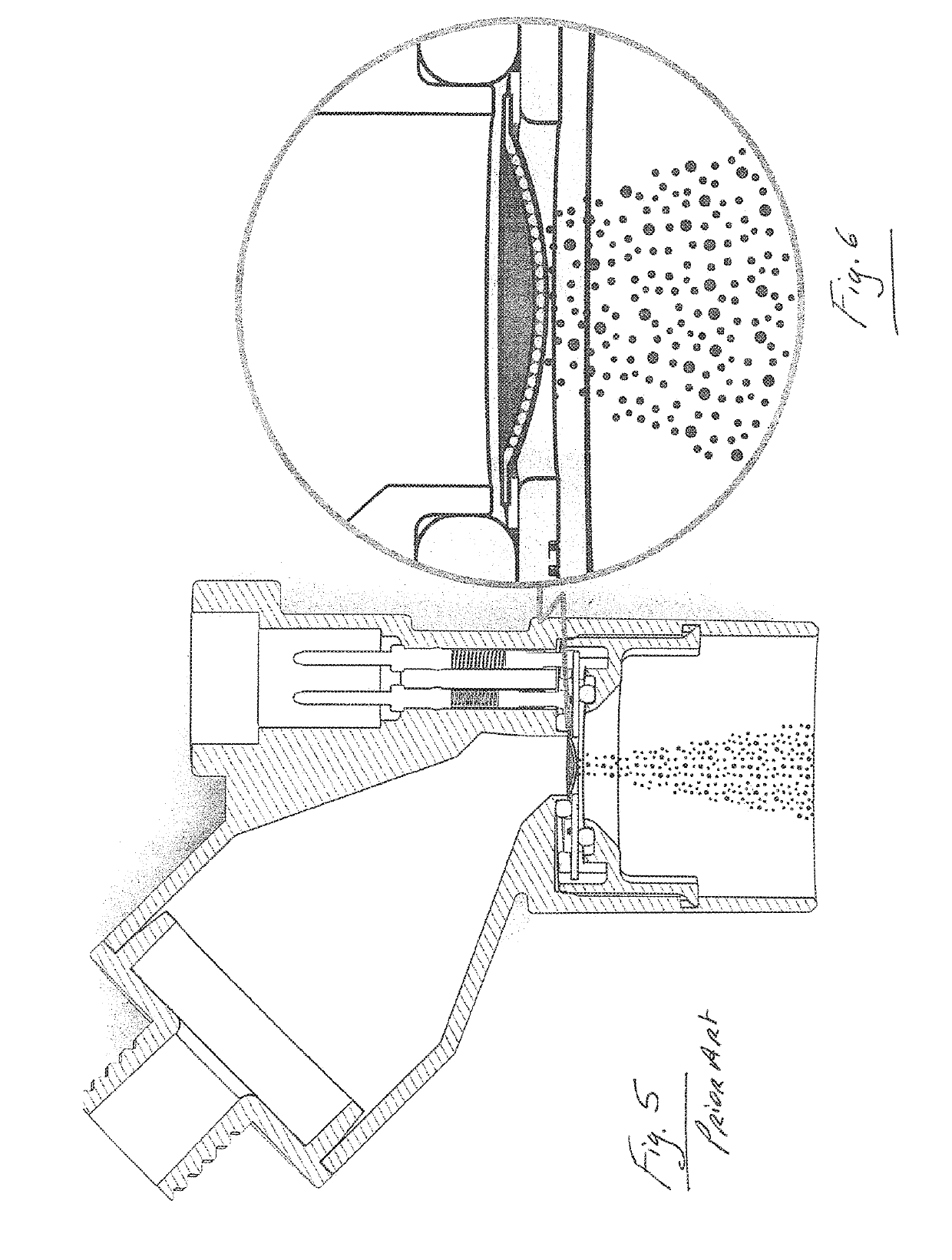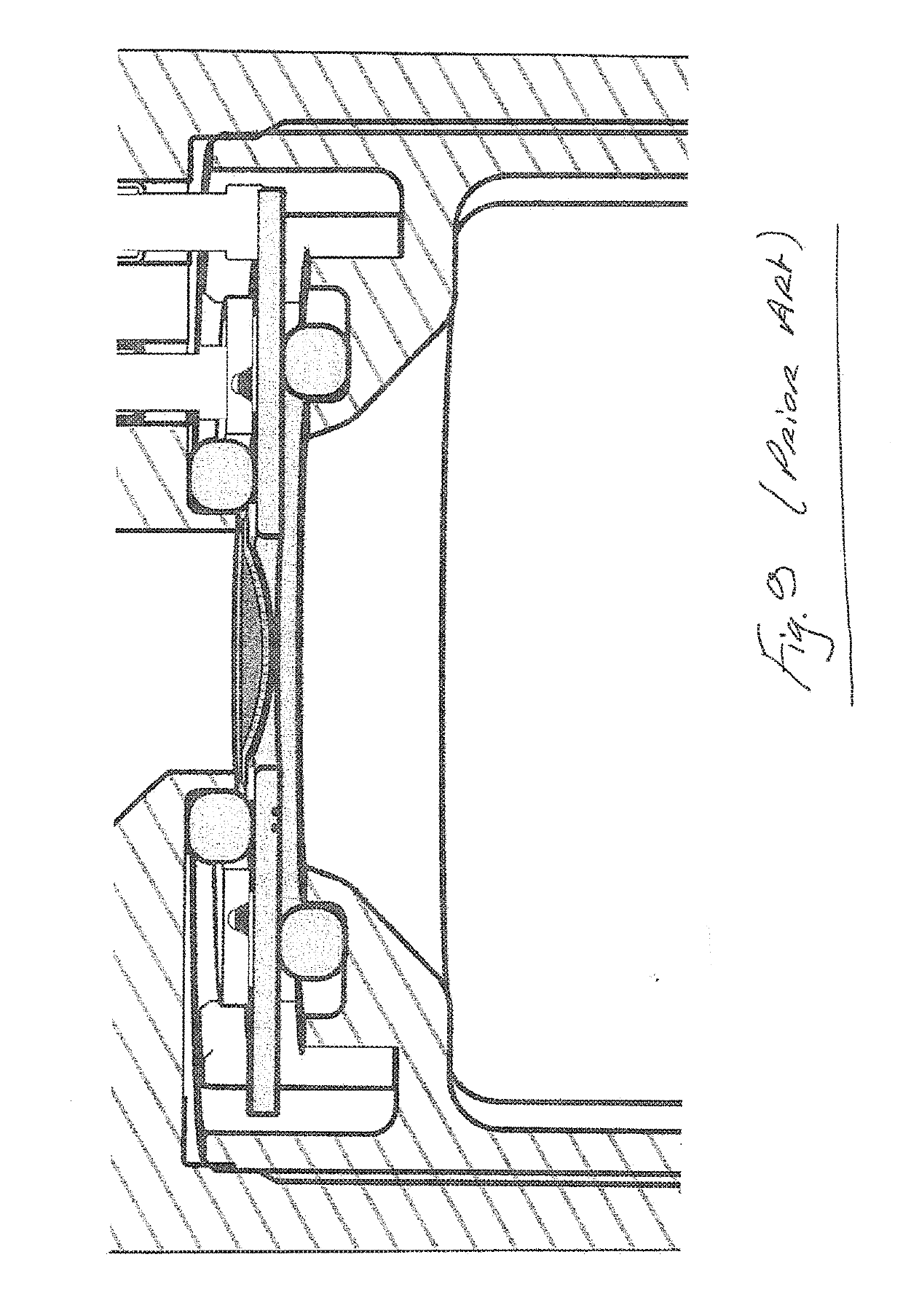Aerosol generator
a generator and aerosol technology, applied in the field of aperture plates, can solve the problems of difficult to deliver a sufficient amount of aerosol, and achieve the effects of increasing the flow rate, and reducing the size of the dropl
- Summary
- Abstract
- Description
- Claims
- Application Information
AI Technical Summary
Benefits of technology
Problems solved by technology
Method used
Image
Examples
example 1
[0054]An aerosol generator of the type described in our WO2012 / 046220A (Aerogen Solo II) was used in this experiment. Two different types of aperture plates were used:[0055]A—a prior art aperture plate which is domed such that the aerosol exits on the convex side of the plate;[0056]B—an aperture plate of the invention which is domed so that the aerosol exits on the concave side of the plate.
[0057]Type A aperture plates with 10 μm outlet openings were evaluated and found to have % dose recovery of 60-75% at a distance of 3 cm and through a 6 mm aperture.
[0058]Two Type B 10 μm inversely domed aperture plates were also evaluated through the same setup. The inverse domed Type B aperture plates showed a large increase in dose recovery. The 10 μm INV2-S1 and 10 μm INV2-S2 had recovered doses of 88-99.8% and 90-99.6% respectively.
[0059]Type A aperture plates with 15 μm outlet openings were also evaluated and were found to have % dose recovery of 65-83% at a distance of 3 cm and through a 6...
example 2
[0068]The inversely domed aperture plates Type B 10, 15 & 20 μm were evaluated at a height of 3 and 4 cm from a target aperture and the aperture size was reduced from 8 to 6 mm. The results show that the height and the aperture hole size did not affect the dose delivery. The dose delivery was recovered across all parameters and ranged from 87.5±2.5%, 81±3% & 81±3% respectively.
[0069]In all cases of Type B aperture plates, the required dose delivery was achieved. All the aperture plates were nearly identical in dose delivery however the aperture plates are distinguished based on their flowrates. The flowrates increased proportionally to hole size. The 10, 15 & 20 μm Type B aperture plates had flowrates of 388, 700 and 1552 mL / hr respectively. The initial requirement 15 for dose duration was ≤1 sec. preferably ≤0.5 sec, however this was reduced to 0.1 seconds to deliver the 10 μL dose (360 mL / hr) in an attempt to overcome the blink response. Again all the type B aperture plates met th...
example 3
[0070]The flowrate of the 20 μm device was seen to be ˜1550 mL / hr, but when this was tested on a person's skin it was found to exert a strong force at the point of impact. In attempts to reduce the force of the jet, several reductions were made to the controller power output however it was seen, as power level decreased below 7 volts, the precision of the jet was affected. As a result of this finding the power output was set at 7 volts. The effect of reducing the power output resulted in a slower flow rate however it was still >>360 mL / hr. A novel approach of a pulsed algorithm was created to reduce the flowrate of the 20 μm device to ˜360 mL / hr. The algorithm was an on-off-on-off-etc. where the duration of the on / off cycle was <20 microseconds. This resulted in the reduction of the flowrate to the required 360 mL / hr. To the naked eye it still appeared as a one continuous jet, however utilising high speed camera analysis it was possible to see that the jet stream was made up of indi...
PUM
 Login to View More
Login to View More Abstract
Description
Claims
Application Information
 Login to View More
Login to View More - R&D
- Intellectual Property
- Life Sciences
- Materials
- Tech Scout
- Unparalleled Data Quality
- Higher Quality Content
- 60% Fewer Hallucinations
Browse by: Latest US Patents, China's latest patents, Technical Efficacy Thesaurus, Application Domain, Technology Topic, Popular Technical Reports.
© 2025 PatSnap. All rights reserved.Legal|Privacy policy|Modern Slavery Act Transparency Statement|Sitemap|About US| Contact US: help@patsnap.com



